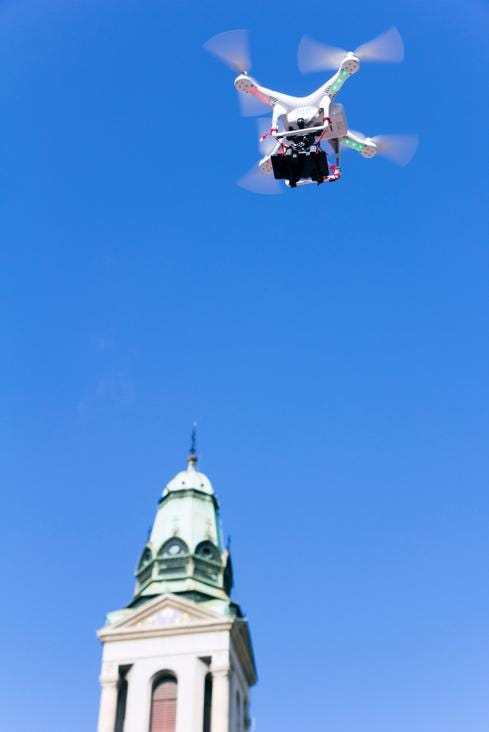Weaponized Drones Approved For North Dakota Police
A bill in North Dakota will allow non-lethal weapons on police drones. Nothing to fear here, move along.


Drones: 10 Novel Uses For Your City
Drones: 10 Novel Uses For Your City (Click image for larger view and slideshow.)
Don't tase me, drone! We might soon hear that shout throughout North Dakota. In a strange bit of political maneuvering, a bill aimed at making sure that police didn't put weapons on drones turned into a bill that accomplished exactly the opposite. North Dakota police can now put Tasers, pepper spray, and all types of non-lethal weapons on their drones.
Let's face it. It was only a matter of time. Since the military drone program was made public, drone sales have gone through the roof for government and private sector use. Numbers are difficult to pin down, because the word drone can mean anything from a fully loaded military fighter jet with anti-aircraft missiles and bunker buster bombs to the toy quad-copter you bought your kid for Christmas.
Drone expert Chris Anderson puts the number at half a million in 2014. Chances are, sometime this year, the number of drones in the US will surpass the number of people living in North Dakota.
Police in India have already equipped drones with pepper spray for riot control, so this isn't even the first weaponized police drone. Should we care anymore? Is this the natural evolution of the drone?
A lot of it depends on what you think of police in general. After all, there's a cop on the other side of every drone who is deciding whether or not to pull the trigger.
[ People do seem to really like drones. Read Drone Study Shows Consumers Are Ready. ]
There are some disturbing questions regarding how an officer might choose to use a service weapon in the field rather than deploy a drone while safely out of harm's way. Will an officer who is out of danger watching a scene unfold on video be more likely to fire because he or she won't think of potential targets as real people? Or is an officer who is not in danger better equipped to make a dispassionate decision than an officer who may feel threatened in the field? Whether to shoot or not is the hardest decision a police officer has to make.
Military bomber pilots push a button from 30,000 feet in the air and see explosions. Military drone pilots sometimes get a more personal look at who they shoot, because they often kill specific targets they're seeing via camera. Military drone pilots speak of spending weeks circling the home of a high-value target, watching the person talk to friends, eat meals, have relations with their spouses, and even go to the bathroom. It is a strange intimacy with someone you might end up attacking. It is likely police drone pilots would get similar views into hostage situations and other standoffs.
The most important things to know about drone operators? They will work endless hours and they're called into every dangerous situation. If the police can use a drone to stay out of danger -- they will. That means the a drone operator may be called on to make the first decision -- whether or not to fire whatever weapon the drone is armed with. Otherwise they might be constantly following orders from others about when to fire. In the process, they will see into the homes of suspects, watch their daily lives, and decide if they are threats. They will make a decision to take someone down in the name of protecting an officer or a civilian.
They'll do it over long hours. Even the military can't train enough pilots. More pilots are quitting each year than graduating from training. The work is hours of boredom followed by minutes of agonizing stress.
When we decide to put a Taser on a drone, we're actually putting the Taser in the hands of someone going through all of the associated overwork, boredom, stress, and potential dissociation from the target. It changes the equation.
At the same time, the decision might have been made for us. A "civilian" has already put a handgun on a drone, and it was ruled that he didn't break the law. The world's first police firefight from drone to drone is inevitable. Once it happens lawmakers will be under more pressure than ever to weaponize drones further. It isn't unlike when the car and the machine gun turned bank robbers into folk heroes and villains in the 1920s.
The weaponized drone is here. The only question is how we feel about it, and what to do.
About the Author
You May Also Like






